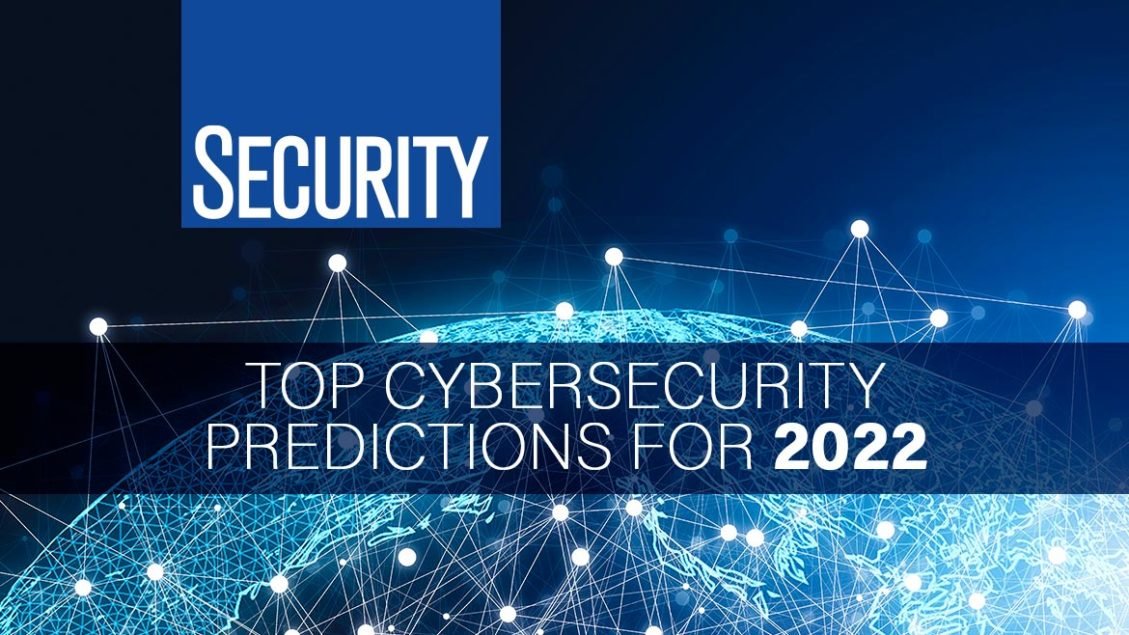Top Cybersecurity Threats of 2022

Introduction
As the world becomes more interconnected, the importance of cybersecurity continues to rise. The digital ecosystem, driven by the rapid adoption of technologies such as cloud computing, remote work, and the Internet of Things (IoT), has created new opportunities for cybercriminals. In 2022, cyberattacks grew in frequency, sophistication, and impact. The major cybersecurity threats faced in 2022 exposed vulnerabilities across industries and nations, underscoring the critical need for robust defense strategies.
This essay will explore the top cybersecurity threats of 2022, including ransomware, phishing, advanced persistent threats (APTs), supply chain attacks, cloud vulnerabilities, insider threats, and the increasing use of artificial intelligence (AI) by attackers. These trends highlight the dynamic and rapidly evolving nature of the global cybersecurity landscape.
1. Ransomware Attacks
Ransomware has remained one of the most pervasive and damaging forms of cybercrime in recent years, and 2022 was no exception. In a ransomware attack, hackers encrypt a victim’s data and demand payment—often in cryptocurrency—to restore access. High-profile ransomware attacks, such as the Colonial Pipeline attack of 2021, demonstrated the wide-ranging impact of this threat, and in 2022, ransomware operations became even more targeted and devastating.
Several factors contributed to the surge in ransomware attacks:
- Ransomware-as-a-Service (RaaS): In 2022, many cybercriminals began offering Ransomware-as-a-Service, where they sell or lease ransomware tools to less skilled attackers. This model made it easier for inexperienced hackers to launch ransomware campaigns.
- Targeting critical infrastructure: Industries like healthcare, energy, and financial services were frequently targeted in ransomware attacks. Hackers aimed at sectors where downtime could have severe consequences, increasing the likelihood of victims paying the ransom.
- Double extortion: Instead of merely encrypting data, ransomware gangs began using “double extortion” tactics. In this scheme, attackers steal sensitive data before encrypting systems, threatening to release the information if the ransom is not paid. This tactic increased pressure on victims to comply with ransom demands.
In response, governments and organizations intensified efforts to combat ransomware through legislation and enhanced cybersecurity frameworks. However, ransomware remained one of the most challenging cybersecurity threats to mitigate due to its lucrative nature.
2. Phishing Attacks
Phishing continued to be a significant cybersecurity threat in 2022, with attackers deploying increasingly sophisticated methods to deceive individuals and organizations into divulging sensitive information, such as login credentials, financial details, or personal data. Phishing attacks typically occur via email, but they have expanded to text messaging (smishing), social media, and phone calls (vishing).
Some notable trends in phishing attacks during 2022 included:
- Targeted spear phishing: Attackers used spear phishing to target specific individuals or organizations with customized, highly convincing messages. By gathering information from social media and public sources, attackers crafted emails that appeared to be from trusted contacts or entities, increasing the success rate of their campaigns.
- Business email compromise (BEC): BEC attacks, a form of spear phishing, became more prevalent. In these attacks, cybercriminals impersonated executives or business partners and tricked employees into transferring funds or sharing confidential data.
- Phishing kits: Similar to Ransomware-as-a-Service, phishing kits were sold on the dark web, allowing attackers to launch sophisticated phishing campaigns without advanced technical skills.
Phishing remains a major entry point for other forms of cyberattacks, including ransomware and data breaches. Educating employees and individuals on how to rAdvanced Persistent Threatsecognize and avoid phishing schemes has become an essential part of organizational cybersecurity strategies.
3. Advanced Persistent Threats (APTs)
Advanced Persistent Threats (APTs) are cyberattacks where adversaries gain long-term access to a network, often for espionage or data theft. APTs are typically carried out by nation-state actors or highly organized criminal groups. Unlike other types of cyberattacks, APTs are characterized by their stealth, sophistication, and extended duration.
In 2022, APTs posed significant threats to governments, critical infrastructure, and multinational corporations. Attackers employed techniques such as:
- Zero-day exploits: APT actors exploited unknown vulnerabilities in software (known as zero-day vulnerabilities) to infiltrate networks undetected.
- Supply chain attacks: These attackers compromised third-party vendors to access the target organization’s network. By gaining entry through trusted software providers or service contractors, APT actors bypassed traditional security defenses.
- Multi-phase attacks: APT campaigns were often multi-phased, starting with initial access through phishing or malware, followed by lateral movement within the network to collect intelligence or sensitive data over an extended period.
APTs are challenging to detect and mitigate due to their sophisticated tactics. In response, organizations increasingly relied on advanced security tools, such as behavior-based threat detection and AI-powered analysis, to detect anomalies and suspicious activities.
4. Supply Chain Attacks
Supply chain attacks gained widespread attention in 2022 after several high-profile incidents exposed the vulnerabilities inherent in interconnected business ecosystems. In these attacks, cybercriminals compromised a trusted third-party vendor or service provider to infiltrate an organization’s network.
The SolarWinds attack of 2020, which involved the compromise of widely used IT management software, served as a wake-up call for companies around the world. In 2022, attackers continued to exploit weaknesses in the software supply chain, especially as organizations increased their reliance on cloud services and third-party applications.
Key factors contributing to the rise in supply chain attacks include:
- Third-party risks: Many organizations lack visibility into the security practices of their vendors, creating opportunities for cybercriminals to exploit weak links in the supply chain.
- Increased interconnectivity: As businesses adopt digital transformation strategies, their ecosystems become more interconnected, increasing the risk of supply chain attacks.
- Complexity of mitigating supply chain threats: Addressing supply chain vulnerabilities is complex and requires collaboration between vendors, customers, and cybersecurity experts to ensure all components of the ecosystem are secure.
To address these risks, organizations have started implementing more stringent security measures, such as zero-trust architecture and supply chain risk management programs, to secure third-party interactions.
5. Cloud Vulnerabilities
As cloud adoption skyrocketed in 2022, so did cloud-related security threats. Cloud services provide scalability and flexibility, but they also introduce security challenges, especially when organizations lack proper configuration or fail to apply security best practices.
Common cloud vulnerabilities in 2022 included:
- Misconfigurations: Many security breaches in cloud environments occurred due to misconfigurations, such as leaving cloud storage buckets open to public access or failing to implement encryption.
- Data leaks: Improper data handling in cloud environments resulted in numerous data leaks. Hackers exploited weak access controls to steal sensitive information from cloud databases.
- Shared responsibility model misunderstandings: The shared responsibility model in cloud computing means that both cloud service providers and customers must implement security controls. However, many organizations failed to understand their role in securing their cloud infrastructure, leading to increased vulnerabilities.
As cloud adoption continues to grow, organizations are focusing on cloud security posture management (CSPM) tools and adopting a proactive approach to securing their cloud environments.
6. Insider Threats
Insider threats, where employees or contractors misuse their access to systems or data for malicious purposes, remained a critical concern in 2022. These threats can be difficult to detect because they involve authorized users with legitimate access to sensitive information.
Insider threats can be classified into two types:
- Malicious insiders: Employees who intentionally steal data or sabotage systems for personal gain or revenge.
- Negligent insiders: Employees who inadvertently expose data or cause security breaches due to carelessness or lack of awareness.
In 2022, insider threats were often exacerbated by the shift to remote work, where employees had more autonomy and access to sensitive systems outside of traditional office environments.
7. Artificial Intelligence (AI) in Cybercrime
In 2022, cybercriminals increasingly used AI and machine learning (ML) to automate and enhance cyberattacks. AI allowed attackers to:
- Automate phishing campaigns: AI-powered systems enabled cybercriminals to scale their phishing campaigns, generating more convincing and personalized attacks.
- Bypass security defenses: Attackers used AI to study and bypass traditional security defenses, such as firewalls and intrusion detection systems.
- Improve malware: AI-driven malware could adapt its behavior to avoid detection by security tools.
In response, cybersecurity teams also turned to AI to detect and respond to cyber threats more effectively. AI and ML-based security tools analyzed large datasets to identify unusual behaviors and flag potential threats in real-time.
Conclusion
The cybersecurity landscape in 2022 was marked by growing sophistication in attack techniques and an increasingly complex digital environment. Ransomware, phishing, APTs, supply chain attacks, cloud vulnerabilities, insider threats, and the use of AI in cybercrime all posed significant challenges to organizations across industries. To combat these evolving threats, organizations and governments have had to adopt more advanced security strategies, relying on a mix of AI, cloud security, and robust employee training to stay ahead of attackers.
The year 2022 underscored the critical importance of continuous vigilance and adaptability in cybersecurity, as cyber threats are expected to grow in scale and impact in the years to come.






